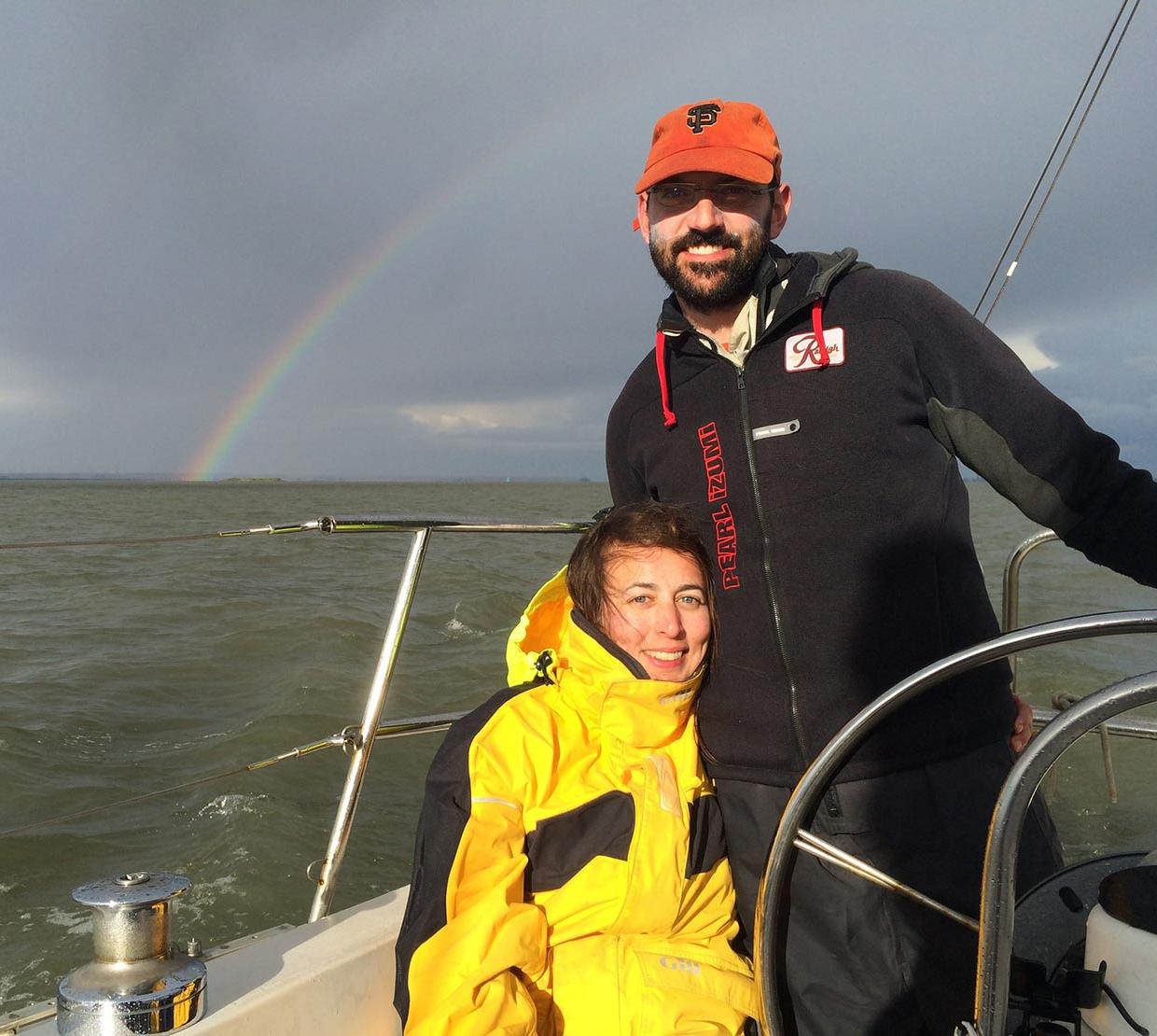The College of Science welcomes Maude David and spouse Kenton Hokanson, who joined the Department of Microbiology in January. David has a joint appointment in the College of Pharmacy and will focus on developing undergraduate curricula in bioinformatics. She joins us from the pediatrics department at Stanford University. She also worked at Second Genome, a company that seeks to improve human health by unlocking the full potential of the microbiome.
David is co-founder of ENOVEO, a company that specializes in environmental microbiology, chemistry and biotechnologies. The business venture is the result of collaboration between researchers at the University of Lyon in France and contaminated site management professionals.
David’s research interests span permafrost microbial communities and the analysis of gut microbiota to genomic variants associated with autism (see below) using new techniques like crowdsourcing to accelerate discovery. With expertise in bioinformatics, data sciences and human gut microbiota, she deepens OSU’s growing strength in microbiome research.
Hokanson, a recent neuroscience graduate from the University of California, San Francisco, is an instructor who will teach and advise undergraduates in microbiology and biohealth sciences. He will also help develop an electrophysiology core facility in the Department of Biochemistry and Biophysics.
Recently the two took time off from their busy schedules to answer a few questions.
What are your first impressions of Oregon State?
David: I love the campus. The lab space is quite impressive — I can’t wait to get it up and running. I’ve had great support from colleagues, helping me navigate through the maze of a new position.
Hokanson: The students I’ve met have been excellent. They’re all taking a lot of classes, often while working, and I’m impressed with their enthusiasm and motivation. My colleagues have been fantastic – hopefully I get the hang of this before they get sick of me asking questions.
Do your research interests overlap at all? Do you ever bounce/spark ideas off each other’s work?
We definitely bounce ideas off of each other. We work in different fields, but there’s just enough overlap for us to speak a common language.
Maude David, in your research you are pursuing genomic variants of autism -- does anything in your research account for why there seems to be such a rise in autism rates?
David: The rise of the rate of children diagnosed with autism is a very complex issue. On one hand, the causes of autism include genomic and environmental factors, and on the other hand, the tools to diagnose the disorder are constantly evolving. My previous work did not exactly address this question, but rather examined the rate of mutations in autism-related genes; and my future work will look at the link between these genes and environmental factors, in particular the human gut microbiome.
What excites you as a researcher and educator about working at Oregon State?
Hokanson: OSU is a remarkable place to teach. The University has made a huge investment in improving education (building the Learning Innovation Center, investing in resources to encourage active learning and online courses, etc). My colleagues have also been supportive of ideas for new courses and undergraduate research opportunities. I’m very happy to be somewhere with such a focus on students.
David: My research depends on interdisciplinary collaboration, and the University has made a big effort to facilitate that. There are no barriers to working with other departments and colleges, and this is key to carrying out the kind of research that I do.
Maude David, to date you’ve worked across both academic and private/start-up settings. Do you see yourself continuing that sort of work here?
David: I have been working with the private sector since the beginning of my Ph.D. The nature of my research, especially the bioinformatics side of it, has facilitated those interactions. But I also observed that research, applied or not, raises a substantial interest among companies. My collaborations between academia and industry have been incredibly beneficial in terms of organization, software development and reproducibility for both partners. I intend to keep collaborating with the private sector, and I also hope to involve my students in these projects and help them develop much-needed [career] contacts for their future.
Kenton Hokanson, what do you hope to accomplish through the electrophysiology core facility you’re working on developing?
Hokanson: There is a lot of good neuroscience research being done at OSU. I’m hoping to contribute to it by bringing researchers from across departments together to take advantage of a new technique. Electrophysiology involves directly recording the electrical signals that neurons use to communicate with each other. This can be a very powerful way to understand how a disease or a research manipulation affects the way neurons behave – hopefully shedding light on how the brain works.
What do you both like to do in your spare time, together or apart?
David: Aside from unpacking boxes, we love sailing, hiking, biking and traveling. I like to read graphic novels, and Kenton is always trying to get a board game going.




